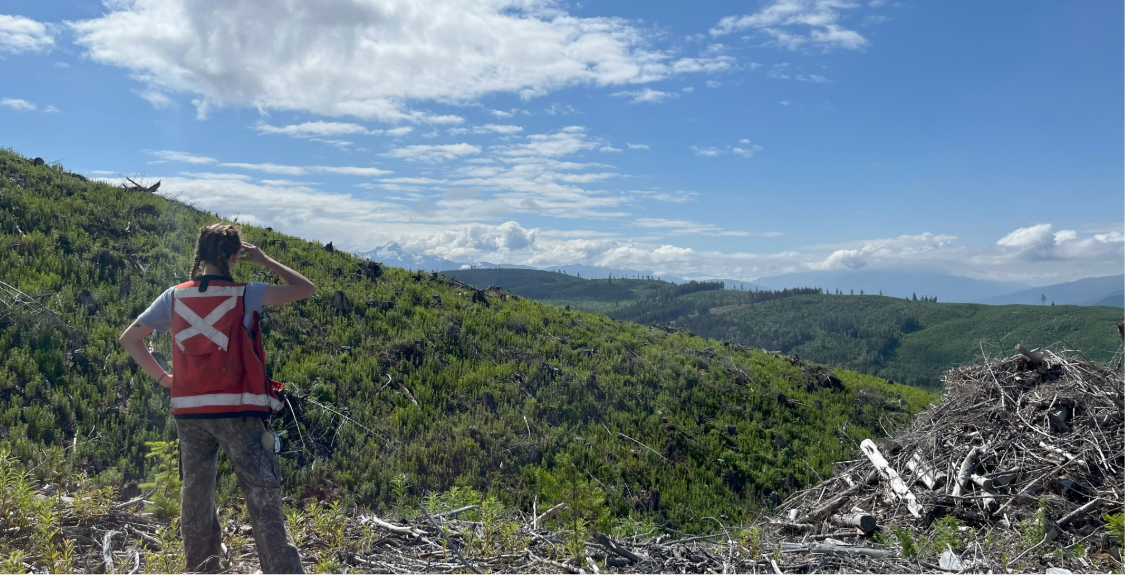AFM NEWS
LiDAR and Enhanced Techniques Are Transforming Forest Management

Nestled between Olympic National Park and the Pacific Ocean is the Quinault Indian Nation (QIN). AFM foresters and interns in Washington conducted a fixed plot validation inventory for Forsite Consultants and completed the field portion of the study across the extent of the reservation. The QIN is an approximately 200,000-acre forest of primarily Western hemlock, Douglas fir, Western red cedar, and red alder. The purpose of the tree inventory was to facilitate the calibration, validation, and statistical adjustment of a LiDAR-derived operational individual tree inventory.
Beginning at the end of April, foresters and interns began fieldwork that lasted for nearly four and a half months, finishing in the second week of September. Before starting any project, the team identifies its objectives. In this case, the group needed to visit 200 predetermined sample points to measure and stem map all trees that fell within a 60.8-foot diameter circular plot. Precise measurements were required on each individual tree, as the tree data would be used with LiDAR to build a wall-to-wall inventory of trees on the Reservation. To prepare for a typical day working on the LiDAR project, foresters and interns would start the evening before by poring over maps and planning which plots they would work on. The group became masters of navigation, as GIS road layers didn’t always coincide with the actual road conditions in the field. Fortunately, the group used the data collection application called SilvAssist, which records data and allows them to traverse to their plot. This app allows the user to preload the plot points and navigate to them once in the field. When the user is within a preset distance of the plot location, a notification appears, alerting them that they have arrived. After confirming that they had arrived at their location, the current GPS coordinates were recorded. That’s when the real work begins.
First, they start monumenting the plot by flagging the plot center and the trees at eye level around the plot center, being sure to include the plot number, forester initials, and the date. They used a Haglof Vertex IV hypsometer to catalog distance and height measurements. The Haglof hypsometer uses ultrasound rather than a laser to determine distance, making it the perfect device to use in thick brush and steep slopes where clear lines of sight are near impossible. Additionally, the Haglof has a transponder that pairs with the hypsometer to receive and send back the ultrasound. The transponder, shaped similarly to a hockey puck, would be kept at the plot center while measuring the distance from the plot center to a tree or held on the face of a tree while measuring the height. Foresters established 200 1/15th acre fixed radius plots and stem mapped each tree located on the plot down to a 5-inch diameter at breast height (DBH). The stem mapping (maps of tree species, size, and distribution) allows the LiDAR data to be matched to the field measurements, ensuring accuracy.
Additionally, foresters collected tree height, species, the presence of any damage, and position in the canopy for each tree in a specific plot. This task involved extensive teamwork, as one person would stand at the plot center to record the data and calculate the azimuth of each tree, while the other person would measure the distance to the plot center and DBH of each tree. Heights, defects, and canopy positions were taken after. Then, foresters took pictures of the plot facing north, east, south, and west, which they shared with Forsite along with the plot data. The successful completion of the LiDAR tree inventory for the Quinault Indian Nation exemplifies the application of new technology to assist with forestry management. This project highlights the importance of collaboration, knowledge, and skill in forestry, setting a solid foundation for ongoing stewardship of Quinault’s lands. Moving forward, the insights gained from this LiDAR tree inventory will inform sustainable management practices that honor the natural resources and cultural heritage of the Quinault Indian Nation.
